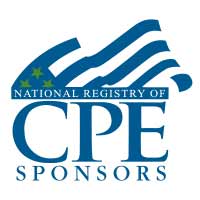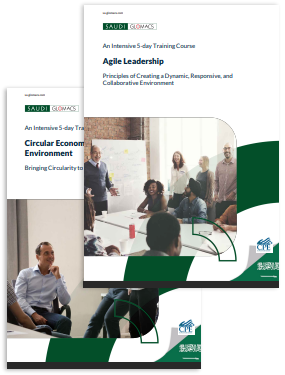An Interactive 5-Day Training Course
Stimulation Technologies
A Comprehensive Approach to Formation Damage Diagnosis and
Corresponding Stimulation Type and Fluid Selection
Course Overview
This Stimulation Technologies training course covers the most aspects of Stimulation Technologies whose main objective is to repair formation harm so as to revive / increase production.
This interactive training course starts by presenting the fundamental ideas for stimulation job style, execution and follow up.
Discussion is dole out on formation harm and its impact on well performance and designing of acid stimulation treatments. Focus is given to the most causes of formation harm (damage throughout drilling, cementing, perforating, producing and working over wells) and how these may be identified.
This GLOMACS training course will highlight:
- Formation Damage (Definition, mechanism, counter measures, etc.)
- Acidizing (Matrix Acidizing, Acid fracturing, etc.)
- Hydraulic Fracturing Overview
- HSE and Stimulation
Training Outline
DAY 1: Introduction to Formation Damage
- Introduction to Formation Damage
- Causes of Formation Damage
- Effect of Formation Damage on Well’s Productivity Index
- Formation Damage Indicator and Consequences
- Classification of Formation Damage Problem
- Diagnosis of Formation Damage
- Best Practice to Avoid Formation Damage
DAY 2: Introduction to Stimulation Concepts and Objectives
- Production System Introduction
- Flow Rate and Permeability Equation
- Effect of a Near Wellbore Damaged Zone on Well Inflow Pressure Profile
- What is well stimulation?
- Objectives of Stimulation
- Stimulation Important Parameters
- Types of Well Stimulation
- Stimulation Treatment Process
- Selection of Candidates for Stimulation
- Well and Stimulation Life Cycle
- Conclusion
DAY 3: Types of Acid and Acid Formulations
- Selection of Candidates for Stimulation
- Matrix Fluid Selection
- Types of Acid and Selection
- Matrix Acidizing
- Carbonate Acidizing
- Chemical Stimulation without Acid
- Sandstone Acidizing
- Factors Affecting Reaction Rates
- Matrix Acidizing Design
- Matrix Acidizing Example
- Selection of Treatment Type
- Matrix Acidizing Treatment Execution
- Real-time Monitoring of Matrix Acidizing Treatments
- Well Clean-up
DAY 4: Monitoring, Execution, Evaluation and Follow-Up
- Acid Fracturing
- Acid Corrosion Parameters
- Selection of Diversion Techniques
- Mechanical Diverting using Conventional Techniques
- Ball Sealers
- Coil Tubing
- Viscous Fluid
- Another Diverting Method
- Potential Formation Damage Caused by Matrix Stimulation Fluid
- Stimulation Techniques and Objectives Summary
DAY 5: Basic of Hydraulic Fracture Treatment, Design and Quality Control
- Introduction into Hydraulic Fracture
- Hydraulic Fracture Fluids and Chemicals
- Proppant
- Hydraulic Fracture Treatment Process
- Rock Mechanism
- Hydraulic Fracture Operation
- Main Fracture Treatment Design
Certificates
- On successful completion of this training course, GLOMACS Certificate will be awarded to the delegates
- Continuing Professional Education credits (CPE) : In accordance with the standards of the National Registry of CPE Sponsor, one CPE credit is granted per 50 minutes of attendance
Accreditation

GLOMACS is registered with NASBA as a sponsor of Continuing Professional Education (CPE) on the National Registry of CPE Sponsors. NASBA have final authority on the acceptance of individual courses for CPE credit. Complaints regarding registered sponsors may be submitted to the National Registry of CPE Sponsors through its website: www.learningmarket.org.
All Training Seminars delivered by GLOMACS by default are eligible for CPE Credit.


About Saudi Glomacs
At Saudi GLOMACS, we specialize in delivering world-class training courses in Saudi Arabia and across various international locations. Our training courses are tailored to meet the unique demands of Saudi Vision 2030 and the Human Capability Development Program, focusing on empowering Saudi citizens and enhancing workforce skills. We offer diverse courses spanning leadership, management, engineering, and technical disciplines to cultivate expertise and drive professional growth. Our flexible learning options—whether in-person, online, or in-house—ensure accessibility and convenience for individuals and organizations alike.
With over 30+ years of experience through the GLOMACS global network, we are committed to delivering innovative, results-driven training solutions. Our expert instructors combine industry knowledge with dynamic teaching methods, fostering practical skill development and long-term career success. By choosing Saudi GLOMACS, you're investing in personal excellence and contributing to the Kingdom’s sustainable economic growth and vision-driven transformation.
What do you need to learn next?
Check our list of courses or let us customize a course for you.
View courses



